The Monstera Esqueleto, also known as Monstera Epipremnoides, is a rare and stunning plant that has captured the hearts of plant enthusiasts worldwide. Known for its large, fenestrated leaves, this plant can add a touch of tropical elegance to any indoor garden. This comprehensive guide will provide you with all the information you need to grow and care for the Monstera Esqueleto successfully.
Introduction
The Monstera Esqueleto is a member of the aroid plant family, which includes popular varieties like Philodendron, Anthurium, and Aglaonema. Native to the tropical rainforests of Central and South America, this plant is prized for its striking, deeply lobed leaves. Similar to Epipremnum and Syngonium, the Monstera Esqueleto is not only beautiful but also relatively easy to care for.

Characteristics
Appearance
The most striking feature of Monstera Esqueleto is the intricate, lace-like holes and fenestrations on its leaves. Unlike the oval-shaped holes seen on many Monstera varieties, Esqueleto has a skeletal or web-like pattern on the leaves. The leaves emerge solid green and develop the beautiful holes as they mature. Mature leaves can have dramatic skeletal patterns across most of the leaf surface.
Growth Habits
Like other Monsteras, Esqueleto is considered a climbing or vining plant in its native tropical habitat. Indoors, it takes more of a bushy or trailing form. Given proper support, such as a moss pole, the vining tendencies will emerge over time. This plant enjoys climbing and attaching itself to supports with its aerial roots.
Monstera Esqueleto is a relatively fast growing variety when provided adequate light, water and nutrients. The vines can grow over a foot per year and foliage reaches maturity in 1-2 years. It’s not unusual for mature plants to have 3-5 foot long trailing vines in optimum conditions.
Native Region and Requirements
Monstera Esqueleto hails from the tropical regions of Central and South America. It thrives in warm, humid environments and dappled sunlight conditions. Replicating those warm and humid conditions indoors along with adequate light allows Esqueleto to flourish.
Why Choose Monstera Esqueleto
Striking and Unique Looks
The intricate, skeletal leaf patterns of Esqueleto are its main draw. The holes and fenestrations emerge as leaves mature, revealing the beautiful and unique patterns. For houseplant collectors looking for conversation starters, Esqueleto is a wonderful choice.
Easy to Grow
Like other Monsteras, Esqueleto is considered generally easy to grow indoors. It is a bit more slow growing than some varieties, but faster than others. Provided proper care conditions, Esqueleto will reward you with stunning foliage and trailing vines. It makes a great plant choice for beginner or experienced plant parents alike.
Excellent Air Purifying Properties
With its large, perforated foliage, Monstera Esqueleto excels at removing pollutants from indoor air. Studies show Monsteras can help filter out common VOCs like formaldehyde and benzene. Adding this easy care plant can help purify the air while adding dramatic visual appeal. Learn more about the excellent air purifying properties of Monstera plants and how they benefit your indoor environment.
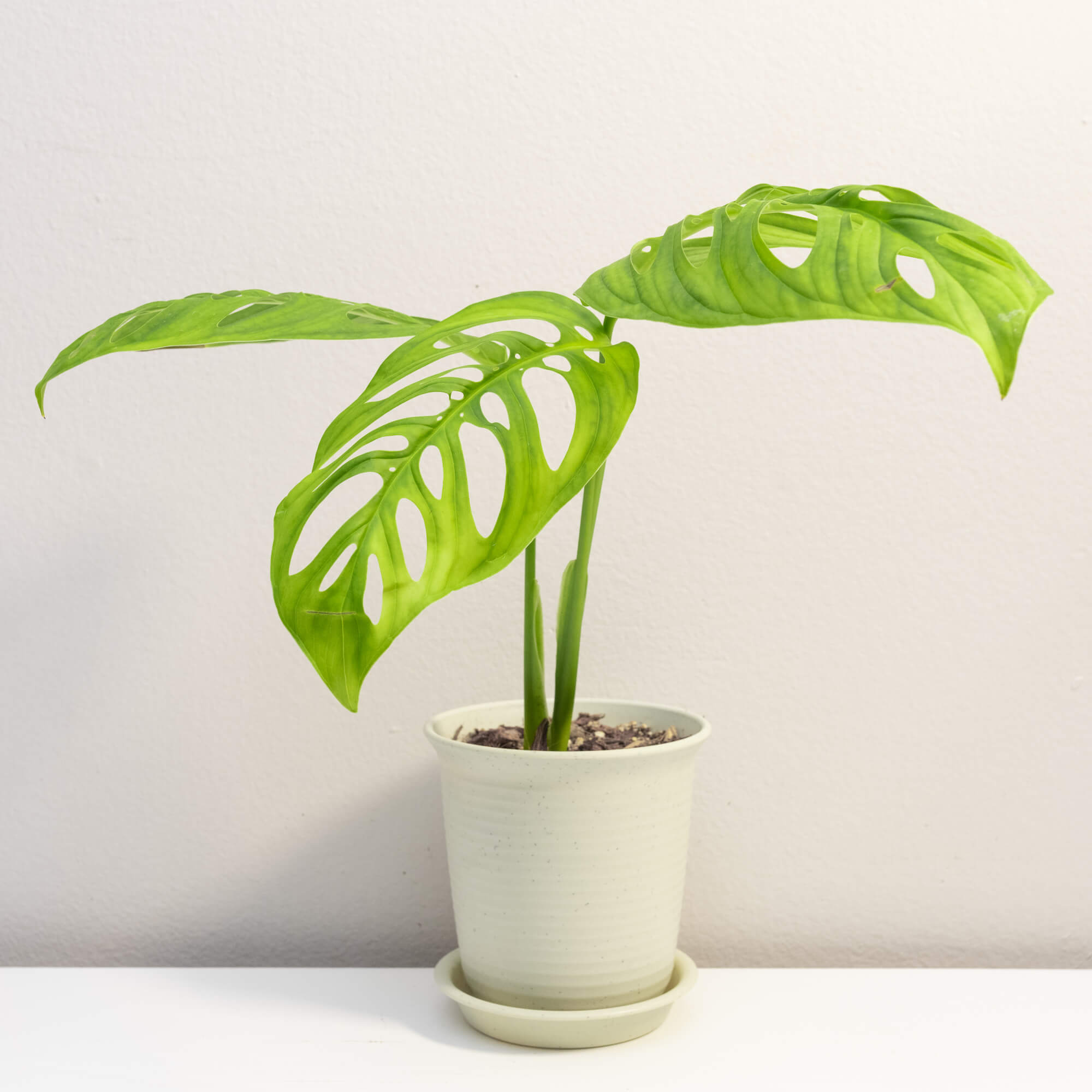
“Unleash the beauty of nature in your home! Click now to buy the exquisite Monstera Esqueleto – a rare gem that transforms any space into a tropical paradise. Don’t wait, bring this natural masterpiece home today!”
Caring for Your Monstera Esqueleto
Light Requirements
Monstera Esqueleto thrives in bright, indirect sunlight. Some gentle direct morning sun is usually tolerated. Provide at least 4-6 hours of bright daylight for best results. Insufficient light leads to sparse and smaller leaves while too much direct sunlight often scorches the leaves.
Soil and Potting
Use a well-draining potting mix amended with perlite or orchid bark. Adding organic material allows the soil to retain some helpful moisture. Make sure pots have draining holes to prevent soggy soil. Adding pebbles below the pot can catch excess water. Use potting containers only slightly larger than the root ball and repot every 2-3 years.
Water and Humidity
Keep the soil consistently moist but not soggy. Allow soil to partially dry out between waterings. Increase watering frequency in brighter lighting. Increase humidity by misting, pebble trays, or humidifiers. 40-60% humidity is ideal. Ensure proper drainage to avoid root rot in moist conditions.
For a detailed guide on caring for your Monstera Esqueleto, consider referring to our extensive Monstera care document.
Fertilizer
Apply a balanced houseplant fertilizer monthly in the growing season (Spring through Summer). Dilute to half strength. Fertilize sparingly in Winter months.
Pruning
Prune off any dead, damaged, or yellowing leaves. Trim back wayward vines to shape the plant. Removing large mature leaves impacts the skeletal leaf patterns that emerge. Avoid over-pruning to allow the unique leaf patterns to develop.
Propagation
Propagate new Esqueleto plants easily be taking stem tip cuttings of at least 3 leaf nodes. Propagate in water or moist soil. The aerial roots that form can be planted in fresh soil once established.

Monstera species are the most sought after by aroid plant lovers
Common Issues and Solutions
Drooping or Yellowing Leaves
Leaves that droop, wilt or yellow often indicate inconsistent watering. Allow soil to partially dry before watering thoroughly. Drooping may also indicate cold conditions next to drafty windows during winter months.
Sparse Leaf Growth
Insufficient lighting often causes sparse growth. Move Monstera to a brighter location with a minimum of 4-6 hours of indirect or dappled light daily. Supplement with grow lights if needed. Fertilize monthly in growing season may also promote new foliage.
Root Rot
Excess moisture leads to root rot and plants unable to absorb nutrients properly. Grow Monstera in potting mix amended with perlite for drainage and orchid bark to hold helpful moisture while still well aerated. Allow the top 25% of soil to dry before watering.
Pests
Monitor for common houseplant pests like spider mites and scale insects. Remove or treat with insecticidal soap sprays as needed. Wipe dust from leaves regularly to prevent unnecessary build up.
Leaf Scortching
Too much harsh, direct sunlight often burns Monstera leaves. Provide bright, indirect light instead. Gentle morning sun is often tolerated if the plant is acclimated to it. Filter harsh light if needed. Move plant to shadier spot if burns occur.
For more in-depth solutions to common issues, explore our document on how to heal Monstera plants.
Conclusion
With striking skeletal leaf patterns and easy care requirements, Monstera Esqueleto makes a wonderful addition for houseplant enthusiasts. Provide this tropical beauty bright, indirect lighting, warm and humid conditions, moist well-draining soil and ample vertical support to allow for lush and beautiful trailing foliage to emerge. Following good care guidelines allows you to enjoy this gorgeous plant for many years. The intricate lacy holes that emerge make a wonderful conversation piece and add lots of visual interest to any indoor space.
FAQs
How do you increase fenestrations on Esqueleto?
More intricate hole patterns develop as leaves reach full maturity, Often taking 1-2 years. Promoting mature foliage development by providing optimal warm, humid conditions, water, light and nutrients helps encourage fenestrations.
Why are my Esqueleto leaves drooping?
Most often, drooping leaves indicate inconsistent watering. Allow the top 25% of soil to dry before watering thoroughly. Also avoid cold drafts which may affect the tropical foliage.
Should I mist my Monstera?
Some occasional gentle misting can help provide the humidity this tropical plant enjoys. Take care not to overdo it as consistent excess moisture can lead to fungal leaf diseases. Providing a pebble tray, grouping plants, or using a humidifier avoids wetting the foliage too much.
What kind of support does Monstera need?
A large trellis, moss pole, or vertical plant support gives vines a structure to cling to with aerial roots as it grows vertically. This allows the natural vining tendencies to emerge over time for a bushy and trailing specimen.

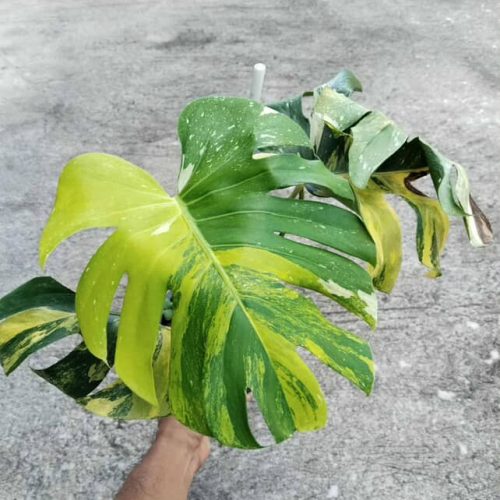







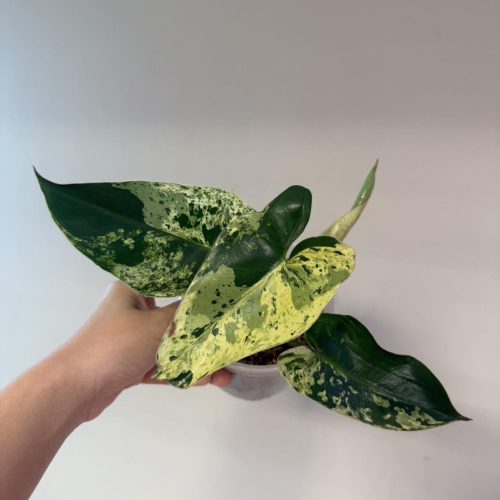









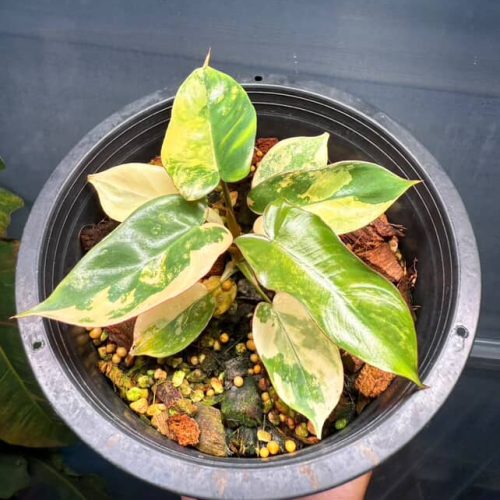






![12x Monstera Borsigiana Albo half leaves variegata [3-4 leaves]](https://greenboog.com/wp-content/uploads/2024/10/Monstera-Borsigiana-Albo-half-leaves-variegata-1-500x500.jpg)



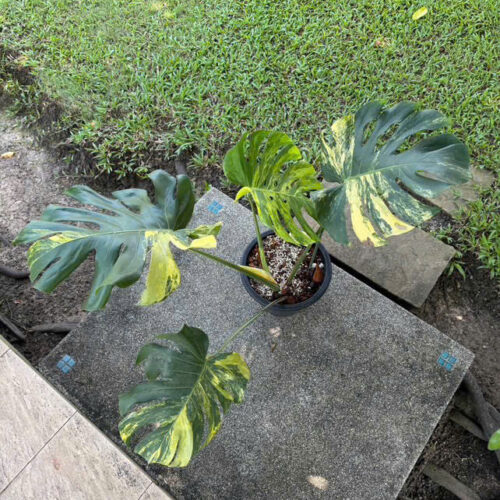



![10 Pots x Monstera Aurea Variegated / Mix Aurea tri color 3-4 leaves [well variegated]](https://greenboog.com/wp-content/uploads/2024/08/Monstera-Aurea-Tri-color-500x500.jpg)


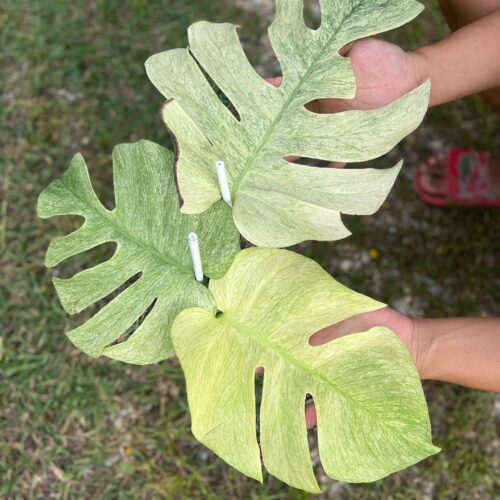

![[SALE] 10 Pots x Monstera Aurea Variegated 3-6 leaves [Medium size]](https://greenboog.com/wp-content/uploads/2025/01/Monstera-Aurea-variegated-4-6-leafs-500x482.jpg)

